Monthly Archives: April 2013
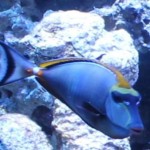
Blond Naso Tang
The below profile is on another one of the interesting tangs that I have kept. I have based this article on what I have learned and observed.
Common Name: Blonde Naso Tang, Elegant Tang, Orange spine surgeonfish, and Pacific Orangespine tang
Scientific Name: Naso elegans
Reef Safe: Yes
Temperament: Peaceful to semi-aggressive
Care Level: Moderate
Max Size: 16 to 18 inches (around 12 inches is more common)
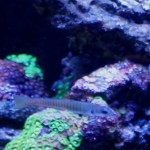
Zebra Barred Dartfish
The below Dartfish profile is based on what I have learned and observed while keeping these fish. They certainly are active little fish to keep and will add a lot of viewing pleasure to any aquarium.
Common Name: Zebra Barred Dartfish, Zebra Dart Goby, Bar Goby, Barred Dartfish, Zebra Goby, and Chinese Zebra Goby
Scientific Name: Ptereleotris zebra
Reef Safe: Yes
Temperament: Peaceful
Care Level: Easy
Max Size: 3 to 5 inches (around 4 inches is more common)
Appearance:
They are a small and comparatively long fish with a grey to green colored body and several black bars or stripes on them that have a very slight yellow to light green boarder on both edges of the black bars.
As you can well imagine, getting a good picture of a very small and fast moving fish can be a challenge for someone like me with limited photography skills, but the below are some pictures of my Zebra Dartfish
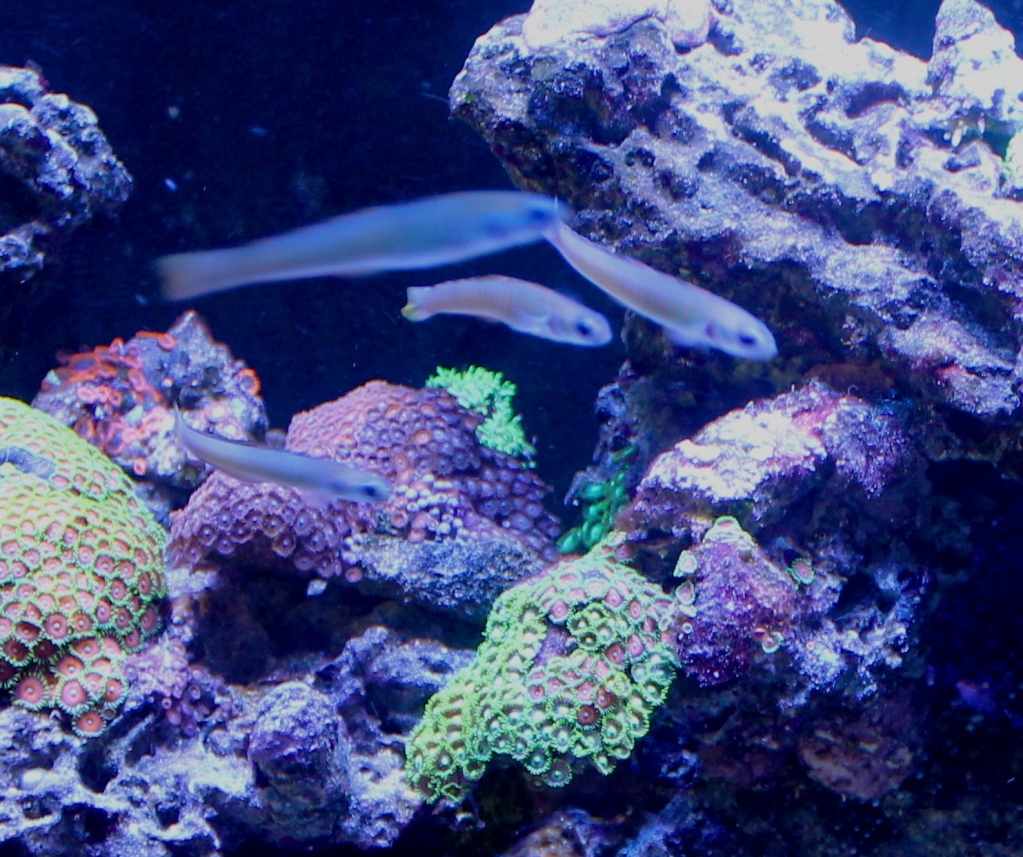
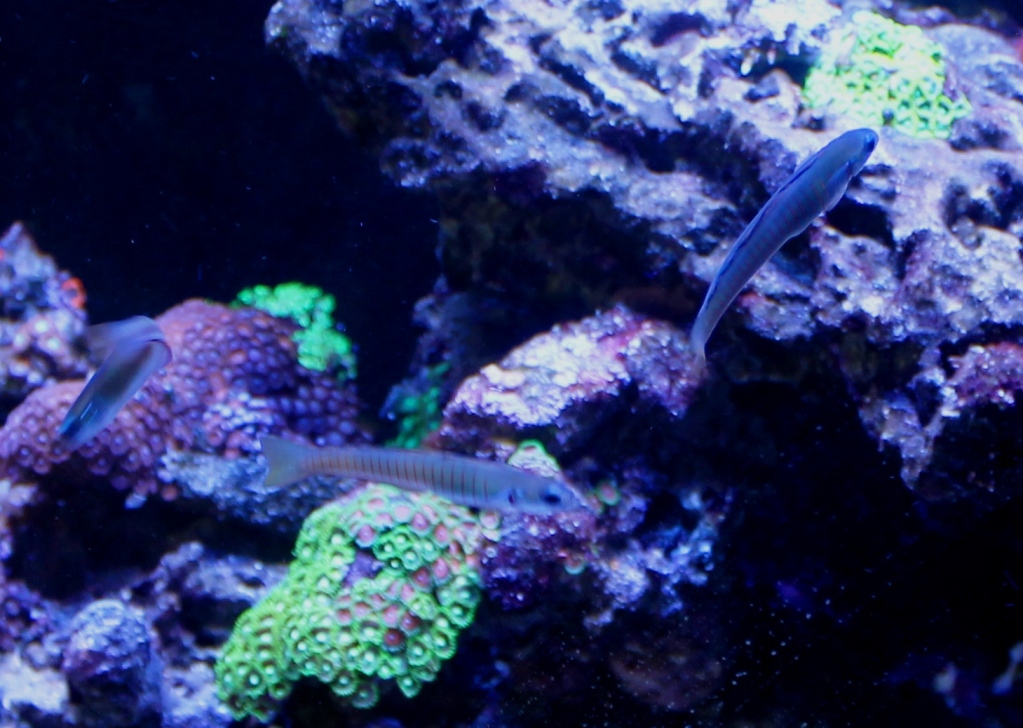
Temperament
Zebra Dartfish are great community fish. They are very peaceful and reef safe. They are very active and very fast swimmers and should be kept with other fish that will not get spooked by their activity level and fast movements of this Dartfish. They are a schooling fish so you will need to keep at least 6 of them together in the same tank. Based on my experience with them, they seem to do better when you have 8 or more which is why I would recommend keeping them in schools of 10. They work very well as dither fish potentially allowing other fish to feel more comfortable through seeing other fish swimming around in the aquarium.
Environment
Although this is a small fish, the Zebra Dartfish is a very active fish and should be kept in a 48 inch long tank to allow for the minimum amount of open swimming spaces which they typically need. You will also need to have some hiding spots for these fish to go to when they feel stressed or threatened. A lot of small hiding spots in your live rock throughout the aquarium will work best for these fish. Zebra Dartfish need a tank with a closed top as they have been known to jump out of the tank very often when kept in a open top tank.
Recommended water conditions:
I would refer you to the below article for the typical water conditions that a Zebra Dartfish will do best in:
https://www.reefaquarium.com/2013/the-basics-of-marine-aquarium-water-parameters/
Diet
Zebra Dartfish are carnivores. They will do best with a wide range of meaty foods like brine shrimp or mysis shrimp just to name two of them. Just make sure it is a food that is small enough for the Zebra Dartfish to get in its mouth. A good quality flake or proper sized pellet food for marine carnivores would also be a good option.
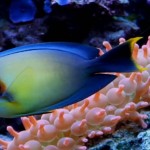
Mimic Tangs
The below profile is on one of the more interesting tangs that I have kept and is based on what I have learned and observed.
General Info:
Common Name: Mimic Tangs,
Scientific Name: Acanthurus Pyroferus (Yellow Mimic Tang), Acanthurus Tristis (Eibli Mimic Tang)
Reef Safe: Yes
Temperament: Can be Semi-Aggressive
Care Level: Easy to Moderate
Max Size: 10 in / 25 cm (7 to 8 inches is more common)
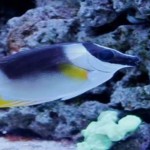
Metallic Foxface
The below Fox Face profile is based on what I have learned and observed. They certainly are great looking and active fish, adding a lot of viewing pleasure to any community aquarium. Please keep in mind there are many different types of Foxface fish that will have different coloring and patterns of coloring. I will only be referring to one type of Foxface.
Common Name: Metallic Foxface, Metallic Foxface rabbitfish, Magnificent Foxface, Andaman Foxface, or the Red Fin Foxface
Scientific Name: Siganus magnificus
Reef Safe: Yes, when well fed and cared for
Temperament: Very Peaceful
Care Level: Easy
Max Size: 8 to 9 inches (around 8 is more common)
Appearance:
They have the common white face with the black band as all different types of Foxface will have. Its body is mostly white in color and will have a large patch of black to dark silver coloring closer the dorsal fin. All of the fins will have a red to yellow colored boarder around the outside edges. Other types of Foxface will have different coloring.
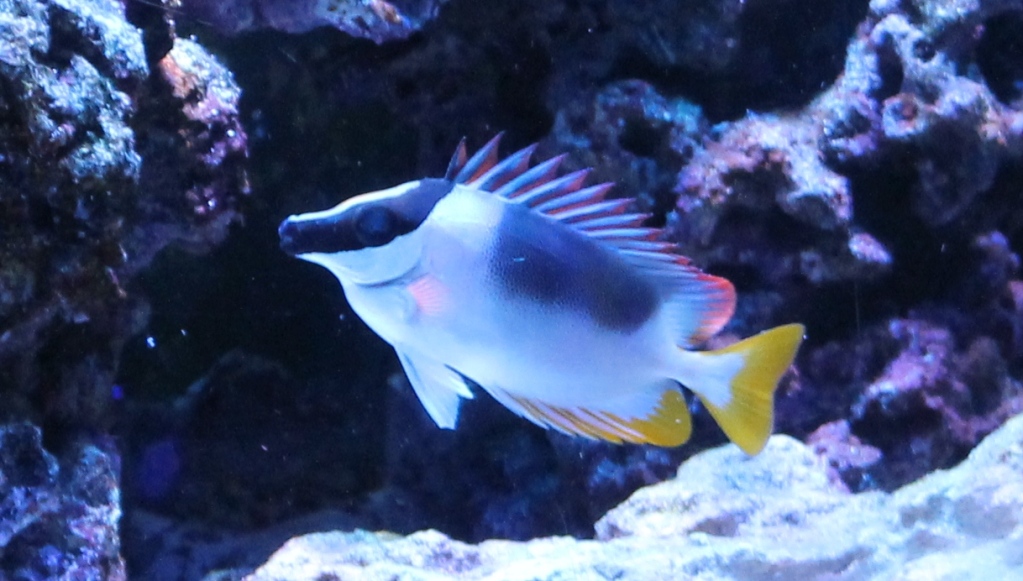
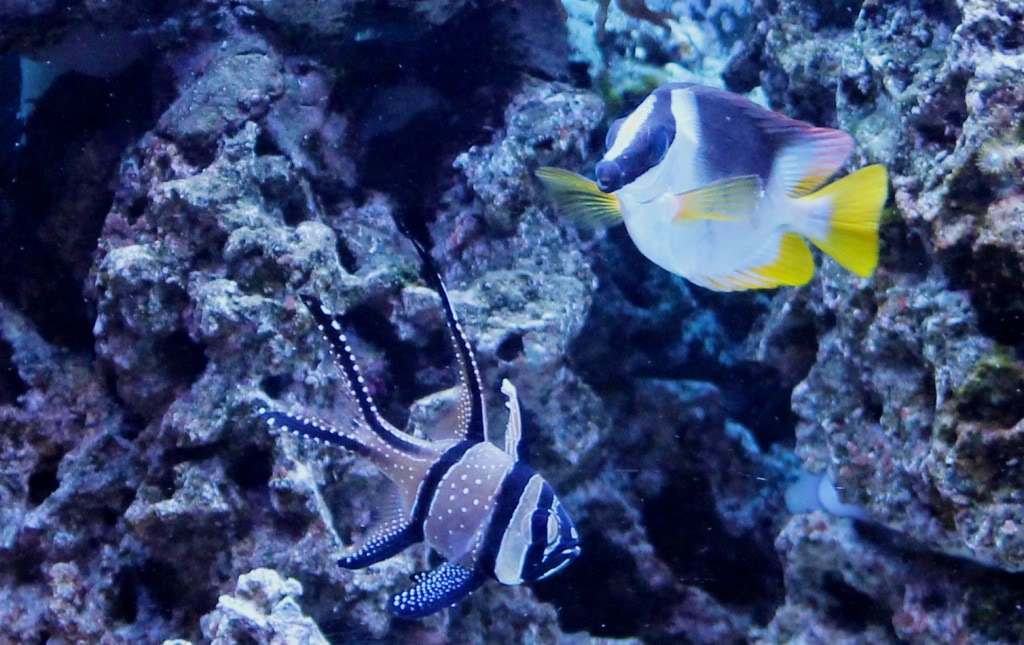
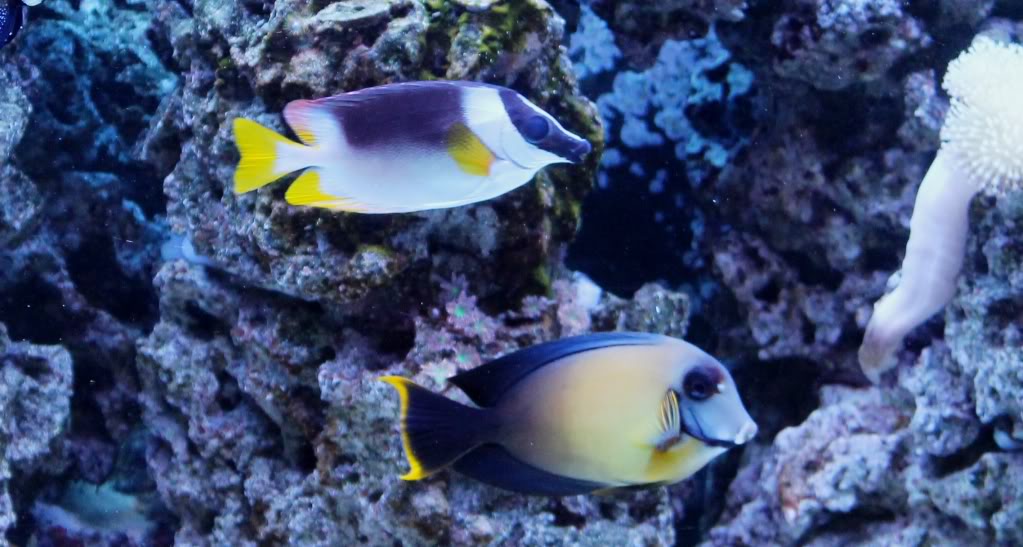
Temperament
They are a very peaceful fish that seldom reacts to fish that are very similar in appearance, size, and color. It would not recommended to keep more than one Foxface in your aquarium as I do not believe you could accurately predict the potential reaction to having two Foxface in the same aquarium.
Environment
This fish will need at least a 75 gallon tank, but would do better in a 125 gallon tank. Lots of live rock will benefit this fish as the Foxface also likes to pick at some of the algaes that can grow in your aquarium. They can spook easily so you should have a few hiding spots within the live rock for the Foxface to go to. The Foxface is also reef safe when well fed.
Recommended water conditions:
Although the Foxface is a hardy fish, I would still refer you to the below article for the typical water conditions that a Metallic Foxface will do best in:
https://www.reefaquarium.com/2013/the-basics-of-marine-aquarium-water-parameters/
Diet
The Foxface is an omnivore. It will benefit from a wide range of meaty foods (like mysis and brine shrimp for example) as well as a good amount of marine algaes. A combination of carnivore and herbivore based marine flake or pellet food would also be good options for a Foxface.
Note:
You should be aware the spines on the dorsal fin of the Foxface are very sharp and venomous. Be careful when handling a Foxface to avoid contact with the dorsal fin. You should also be careful when you have your hands in the aquarium not to spook or corner the Foxface to prevent it from accidently stinging you. If you do get stung, soak the area of the sting in hot water (as hot as you can stand). If you see any type of allergic reaction such as hives, a rash or redness coloring, and swelling moving out from the area of the sting, seek medical attention immediately. Just by being careful, you should easily be able to avoid ever being stung by the dorsal fin.
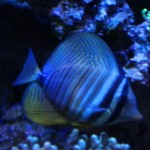
Sailfin Tang
Common Name: Sailfin Tang, Desjardini Sailfin Tang, Indian Ocean Sailfin Tang, Red Sea Sailfin Tang.
Scientific Name: Zebrasoma Desjardini
Reef Safe: With Caution
Temperament: Semi-Aggressive
Care Level: Moderate
Max Size: 14 to 15 inches (around 10 to 11 is more common)
Appearance:
This Sailfin tang will have a silver or grey colored body with vertical yellow stripes and varying sized dots (or freckles) on the body, face, and tail. They tail will have a blue like tint to it under the correct lighting conditions. The Sailfin tang gets its name from the dorsal and anal fins which, when extended, will make this fish appear to be twice as large as it is.
Juvenile Sailfin tangs will not have any of the above described spots on them as that will slowly develop as the fish starts to mature.
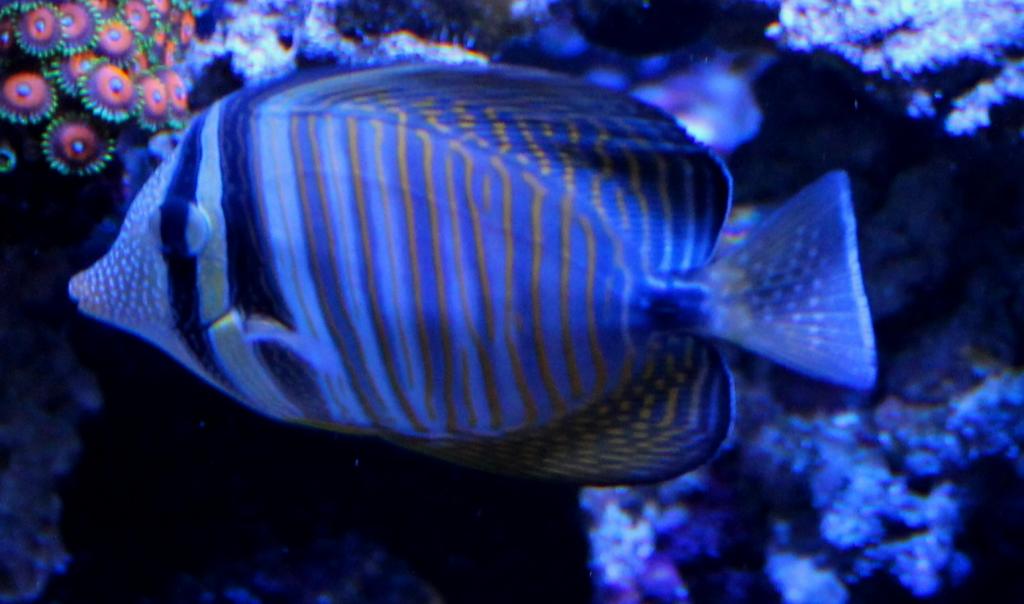
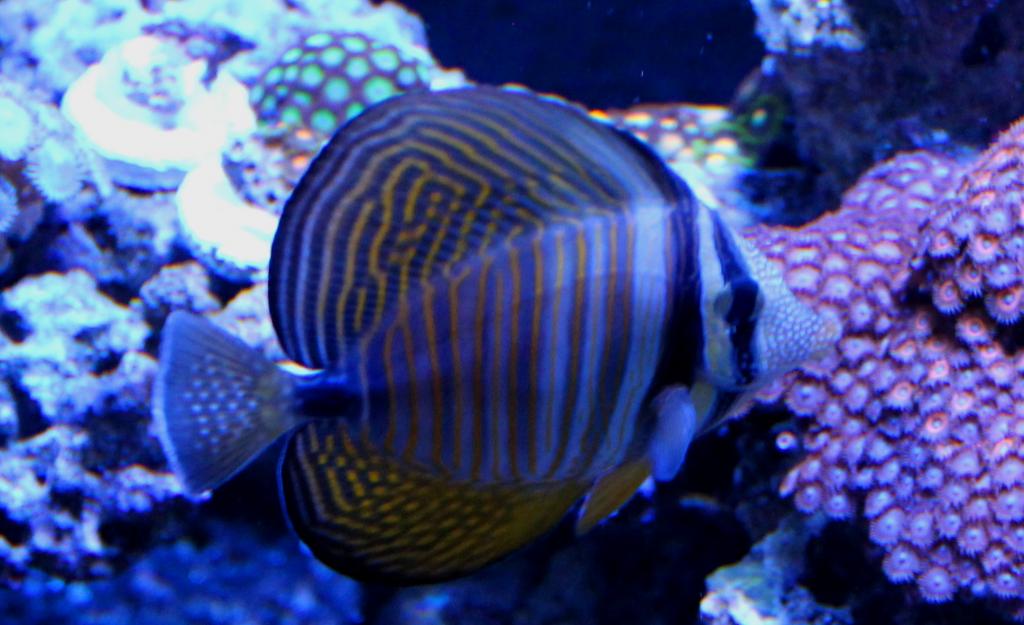
Temperament
Although they are generally reef safe, they sometimes can pick at clam mantels or LPS corals with soft tissues. They should not be kept with other Sailfin tangs or other tangs that will look similar to the Sailfin such as yellow tangs for example. The Sailfin tang should be added last to the aquarium in order to reduce the chance of any aggression.
Environment
These tangs will do best in a 180 gallon aquarium with a lot of live rock to pick at as well as hiding spots to go to should the tang feel threatened.
Recommended water conditions:
I would refer you to the below article for the typical water conditions that a Sailfin tang will do best in. You have to keep in mind, as a moderately difficult fish, they will need very good and very stable water conditions.
https://www.reefaquarium.com/2013/the-basics-of-marine-aquarium-water-parameters/
Diet
As with most tangs, the sailfin tang will accept almost any food you may offer it. However, they are herbivores and will require a diet consisting mostly of sea algaes with some other verities of food on occasion. A good quality flake or pellet food meant for marine herbivores is also a good option for the Sailfin tang’s main diet.
A reference for your consideration
https://www.reefaquarium.com/2013/responsible-fish-keeping/
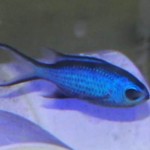
Reef Chromis
Common Name: Blue Reef Chromis, Blue Chromis
Scientific Name: Chromis Cyaneus
Reef Safe: Yes
Temperament: Peaceful
Care Level: Easy
Max Size: 5 inches
Appearance:
This chromis is darker blue in color with black edging around the fines and a black coloring on the head around the eyes.
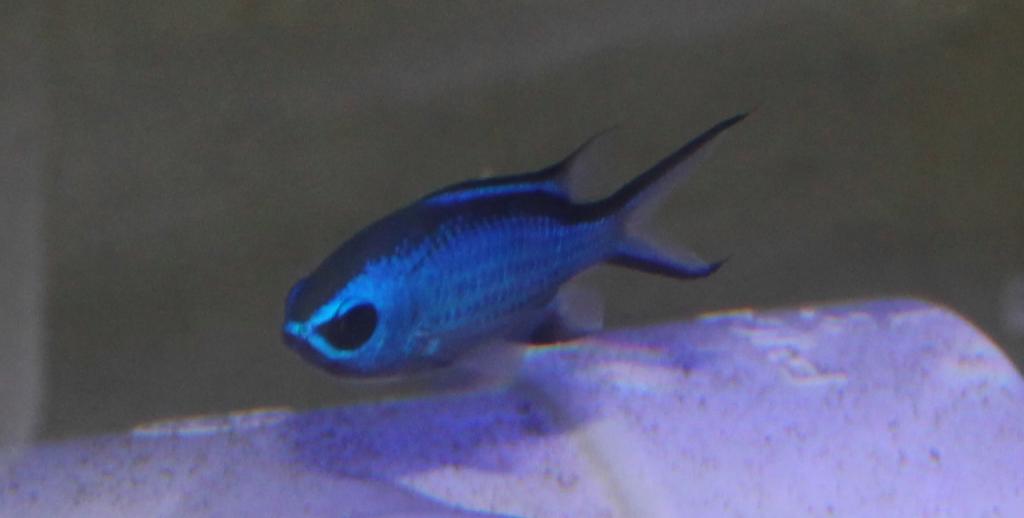
Temperament
The Reef Chromis are a schooling fish and should be kept in numbers of between 6 and 10. As chromis are closely related to the damselfish species, there can be slightly aggressive behavior observed between the reef chromis in an aquarium when they are establishing a “pecking order” among the school. This aggression can get bad at times but it typically will be short lived.
Environment
I would suggest nothing less than a 55 or 75 gallon tank as you would need to keep them in a school and they are very active fish. Many hobbyists will use reef chromis as a dither fish to provide a lot of swimming activity in the aquarium making other shy fish feel more comfortable and safe in the aquarium.
Recommended water conditions:
Although these are very hardy fish, I would still refer you to the below article for the typical water conditions that reef chromis will do best in:
https://www.reefaquarium.com/2013/the-basics-of-marine-aquarium-water-parameters/
Diet
Reef Chromis are omnivores and will do best when offered a variety of meaty foods along with a mixture of different types of marine flakes and pellets.
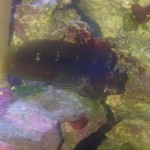
Starry Blenny
The below Starry Blenny profile is based on what I have learned and observed. They certainly can have just about the most personality of any marine fish making them a great addition to almost any community aquarium.
Common Name: Starry Blenny, Snowflake Blenny, Starry Lawnmower Blenny (not to be confused with a Lawnmover Blenny)
Scientific Name: Salarias Ramosus
Reef Safe: Yes
Temperament: Peaceful
Care Level: Easy
Max Size: 5 to 6 inches
Appearance:
They have a dark brown to brown color with a lot of white spots along their body. The pectoral and tail fins will also be a lighter color and sometimes even have a bit of a yellowish tint to them. They also have a very interesting looking small whisker like appendage on their head next to their eyes.
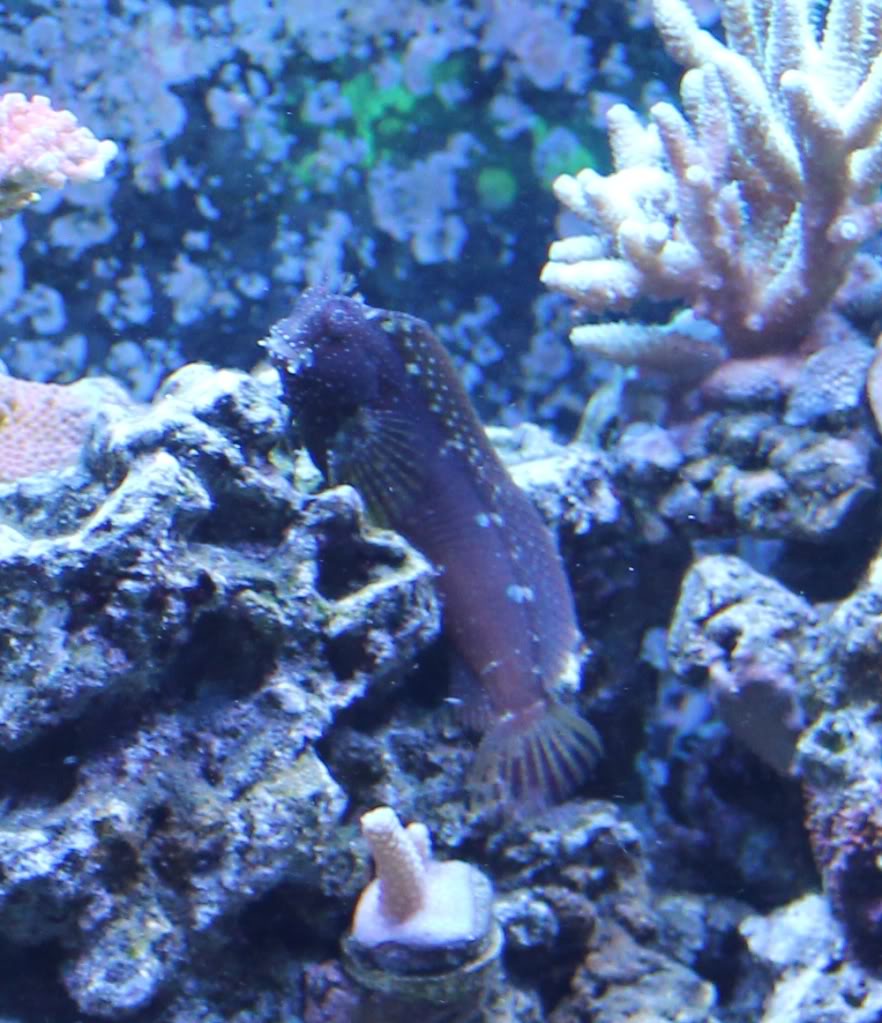
Temperament
They are very peaceful fish. However, you need to use caution when keeping them with other fish that have a similar shape and color. They have also been known to become very territorial with other blennies unless you are lucky enough to get a mated pair. I would not recommend having more than one in a tank smaller than 125 to 180 gallons and recommend caution with doing so.
Environment
The Starry Blenny can be kept in a 30 gallon aquarium as they do not require a lot of swimming space. They will need a lot of live rock as they prefer to hop around on the rocks, often stopping to sit a while and watch what is going on around them. Make sure your rock is safely stacked as this Blenny has been known to dig around a little around the rocks. There should also be a few hiding spots for this Blenny to go to should he feel threatened. They are reef safe. You should also have a lid on your aquarium as there is a small chance a Starry Blenny can become a jumper in a open top tank.
Recommended water conditions:
I would refer you to the below article for the typical water conditions that a Starry Blenny will do best in:
https://www.reefaquarium.com/2013/the-basics-of-marine-aquarium-water-parameters/
Diet
The Starry Blenny is an herbivore. Although they may enjoy meaty foods, they will need a diet that consists of mostly marine algaes and can also benefit from an herbivore based marine flake or pellet food. The Starry Blenny will make a good addition to your clean-up crew as they will eat many different types of marine algaes that will develop in an aquarium. For this reason, you should only add a Starry Blenny to a well matured aquarium that will provide some algae for him to snack on in between feedings.
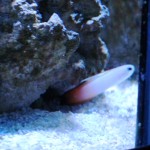
Firefish
Common Name: Firefish, Fire Dartfish, Magnifica Dartfish, Fire Goby, Firefish Goby.
Scientific Name: Nemateleotris magnifica
Reef Safe: Yes
Temperament: Peaceful
Care Level: Easy
Max Size: 3 to 4 inches
Appearance:
These are very attractive looking little fish. The head will have slight yellow like coloring to it followed by white coloring back to about the midpoint of the body. From the midpoint of the body to the end of the tail fin, the Firefish will have a striking red color. The fins will also have a black trim or boarder to them.
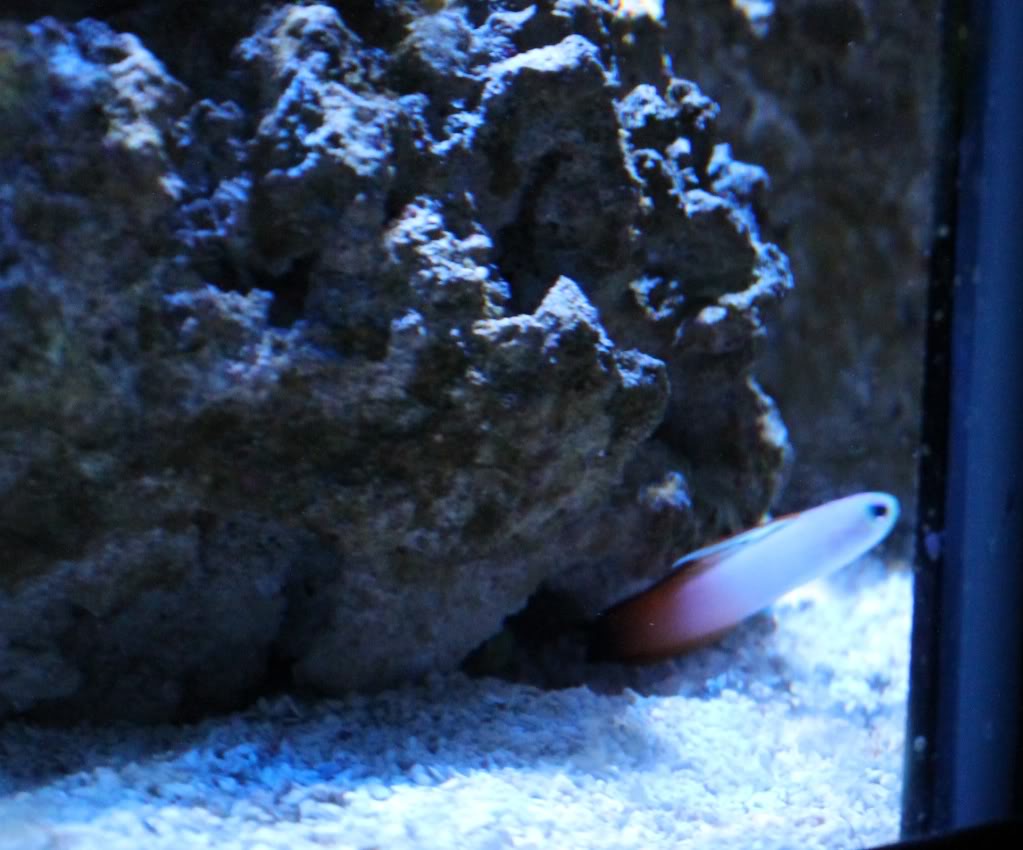
Temperament
These are fairly peaceful fish. The only time you may experience any aggression would be when kept with other members of its own species unless you get a mated pair.
Environment
As this is a very small fish, you can keep one in a tank as small as 20 gallons. They will need smaller hiding spots throughout the aquarium within the live rock for this fish to go to when it feels stressed or threatened. The Firefish has also been known to be a jumper so it would be best to have glass tops or a canopy on your aquarium. They will do best when added to a mature set-up.
Recommended water conditions:
I would refer you to the below article for the typical water conditions that a Firefish will do best in:
https://www.reefaquarium.com/2013/the-basics-of-marine-aquarium-water-parameters/
Diet
As these fish are omnivores, they will do best when offered a combination of frozen foods such as brine shrimp along with algae based marine flake or pellet foods. They will also eat algae and different types of plankton, pods, and larvae that can naturally develop in your aquarium.
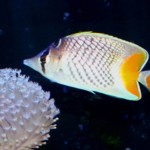
Orange Tail Butterflyfish
Common Name: Mertensii Butterflyfish, Orange Tail Butterflyfish, Crowned Pearlyscale Butterflyfish
Scientific Name: Chaetodon Mertensii
Reef Safe: No
Temperament: Peaceful to Semi-Aggressive
Care Level: Moderate
Max Size: 10 inches (around 8 is more common)
Appearance:
Its body is silver to grey color with black lines (or markings) that form a patter on its body. It will also have a black strip with a silver trim across both eyes. The back ¼ to 1/8 of its body will be a solid orange color without any markings.
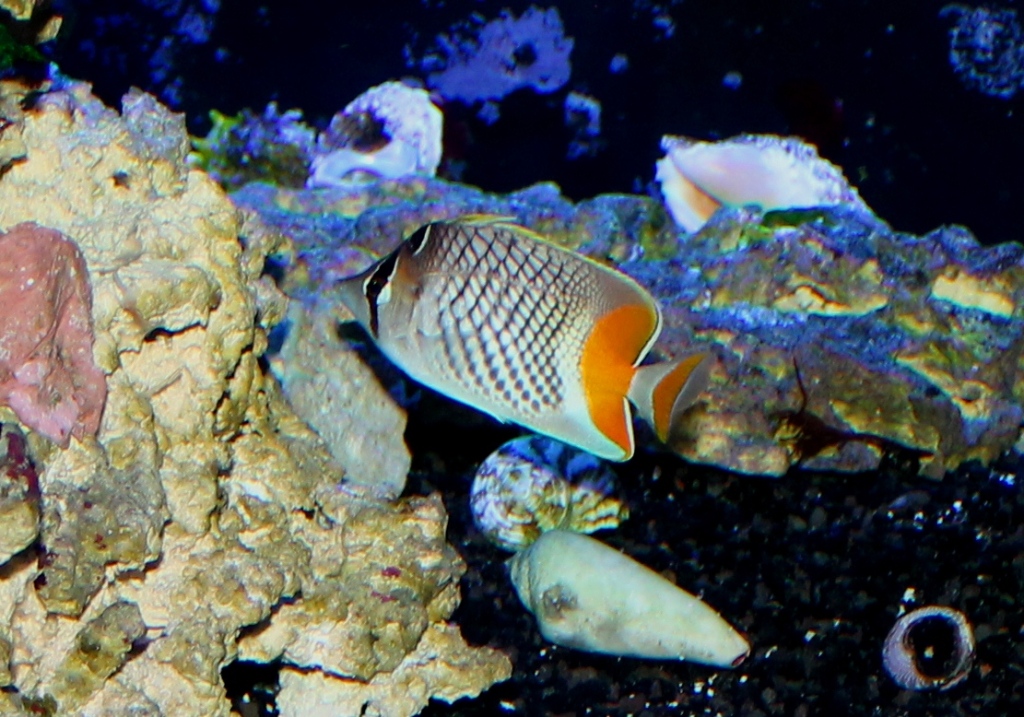
Temperament
They are a peaceful for the most part but can become territorial. When kept with other types of Butterflyfish, they are highly likely to become territorial resulting in some aggression. I would not recommend keeping more than one in an aquarium.
Environment
They are a fairly active fish that will need at least a 75 gallon aquarium. They are very likely to eat most types of LPS, soft corals, and even nip at clam mantels and even anemones in some cases. They will do best in FOWLR set-ups with more peaceful fish that do not look like a Butterflyfish.
Recommended water conditions:
I would refer you to the below article for the typical water conditions which this Butterflyfish will do best in. As with most fish that are moderately hard to keep, you will need to maintain very good and very stable water parameters for this fish
https://www.reefaquarium.com/2013/the-basics-of-marine-aquarium-water-parameters/
Diet
As they are carnivores in the wild, they will do best when offered meaty frozen foods along with a good quality marine flake or pellet food which is intended for carnivores. They will also benefit from a frozen food which also contains sponges.
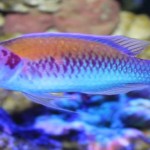
Orange Back Wrasse
Common Name: Orange Back Wrasse, Orange-Back Fairy Wrasse,
Scientific Name: Cirrhilabrus Aurantidorsalis
Reef Safe: Yes
Temperament: Peaceful
Care Level: Easy
Max Size: 3.5 to 4.5 inches
Appearance:
This is a very colorful fish. The body of the fish is a vibrant blue like color, and (as the name suggests), they have a brightly colored orange back running the full length of the body, from the head to the tail. Males will have an additional dark red or burgundy coloring on the head. There can be some slight color variations among different orange back wrasses. The male’s coloring can darken up a little as a part of the mating process.
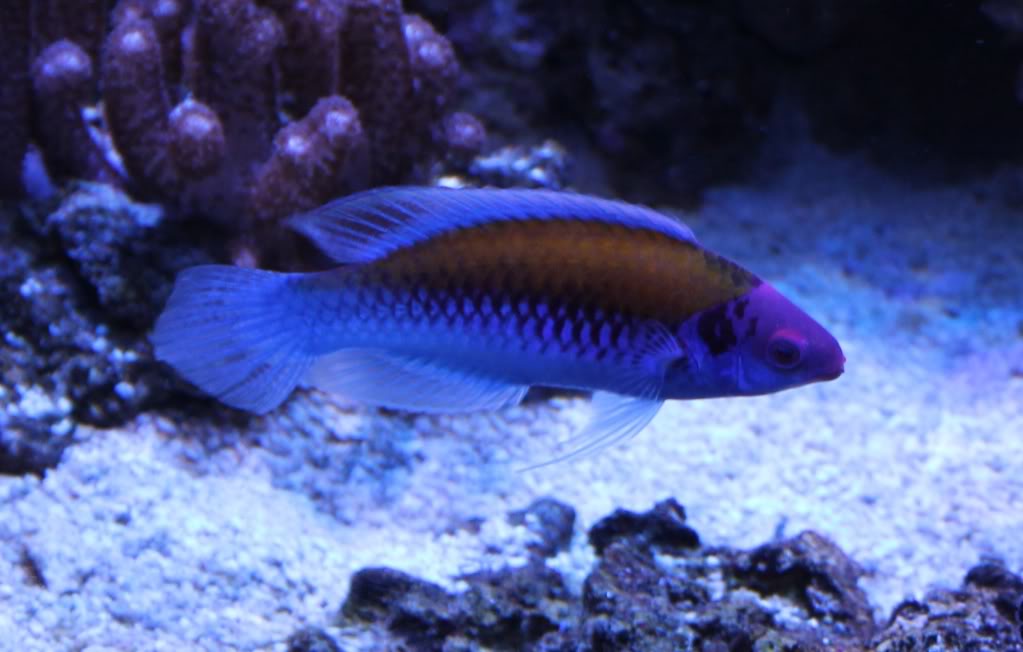
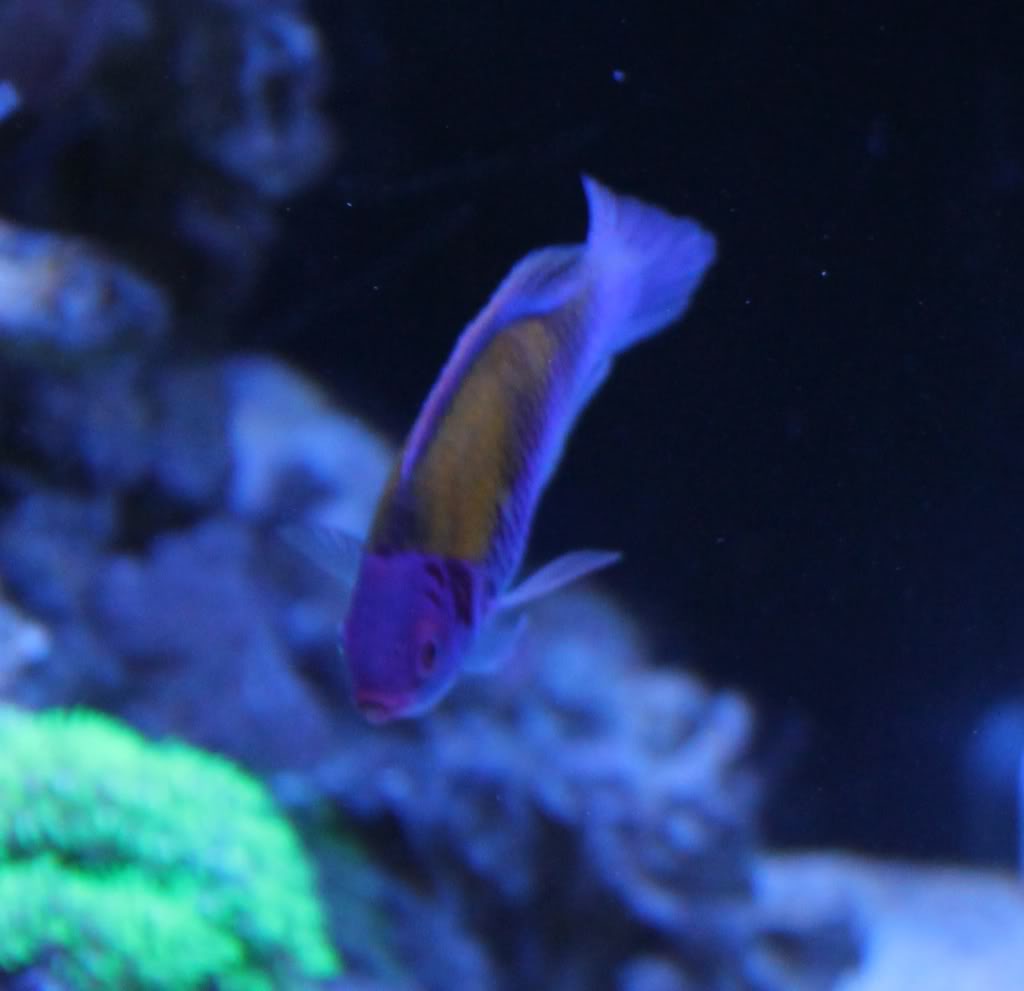
Temperament
These are very peaceful and active fish. I would not suggest keeping more than one in an aquarium unless you have a male and female pair.
Environment
The Orange Back Wrasse will need at least a 55 gallon aquarium as this is a very active fish that doesn’t like to stay still for very long at all. They will need some hiding spots among the live rock in your aquarium to go to when they feel threatened. They have also been known to jump out of aquariums so it is advisable to have a canopy or glass tops on your aquarium.
Recommended water conditions:
I would refer you to the below article for the typical water conditions which this wrasse will do best in:
https://www.reefaquarium.com/2013/the-basics-of-marine-aquarium-water-parameters/
Diet
As with most wrasses, they are carnivores. They will do best when offered a variety of different meaty food along with marine flake or pellet foods meant for carnivores.